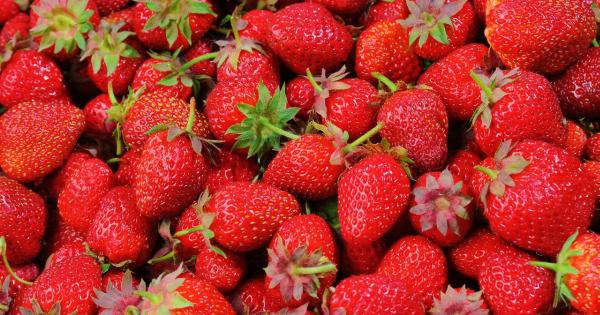The DASH diet, which stands for Dietary Approaches to Stop Hypertension, is a well-researched and highly effective diet plan. It is designed for those who want to improve their health, especially by lowering their blood pressure.
However, the diet has shown to be effective in weight loss, improving heart health, and reducing inflammation as well. The DASH diet emphasizes a variety of nutrient-rich whole foods, including fruits, vegetables, whole grains, lean proteins, and low-fat dairy products. Let’s delve into the details of this diet and see how it can transform your body.
What is the Dash Diet?
The DASH diet was developed by the National Heart, Lung, and Blood Institute (NHLBI) as a way to help lower high blood pressure without medication.
It has since become a popular diet plan for people wanting to improve their overall health and reduce their risk of chronic diseases, such as heart disease, stroke, and diabetes.
The diet is rich in fruits, vegetables, whole grains, lean proteins, and low-fat dairy products. It’s also low in saturated and trans fats, cholesterol, sodium, and added sugar.
This makes it an excellent diet choice for people who want to lose weight, improve their heart health, or reduce inflammation in the body.
How Does the Dash Diet Work?
The DASH diet is rich in nutrients like fiber, potassium, calcium, and magnesium that have been shown to lower blood pressure.
By emphasizing these nutrients in your diet, you can help regulate your blood pressure levels and reduce the risk of hypertension.
The diet also encourages you to cut back on sodium, which can raise blood pressure. By reducing your sodium intake, you can help lower your blood pressure and reduce your risk of heart disease and stroke.
Studies have shown that the DASH diet can lower blood pressure by up to 11 points in just two weeks.
Aside from its benefits to blood pressure, the DASH diet can also help reduce inflammation in the body, which is linked to chronic diseases like heart disease, cancer, and diabetes.
This is because the diet emphasizes whole, nutrient-dense foods that are naturally anti-inflammatory.
What Foods Can You Eat on the Dash Diet?
The DASH diet emphasizes whole, nutrient-dense foods that are rich in vitamins, minerals, and antioxidants. Here are some foods to focus on:.
- Colorful fruits and vegetables, like berries, leafy greens, carrots, and sweet potatoes
- Whole grains, like quinoa, brown rice, and whole wheat bread
- Lean proteins, like chicken, fish, tofu, and beans
- Low-fat dairy products, like milk, yogurt, and cheese
- Healthy fats, like olive oil, avocado, and nuts
- Herbs and spices, like turmeric, garlic, and cinnamon
While the diet doesn’t exclude any food groups outright, it does recommend limiting certain foods that are high in sodium, saturated fat, and added sugars, like processed foods, red meat, butter, and sugary drinks.
This means you can still enjoy treats in moderation, but the emphasis is on whole, nutrient-dense foods.
What Are the Benefits of the Dash Diet?
The DASH diet has been studied extensively and has a range of benefits, including:.
- Lowering blood pressure
- Reducing the risk of heart disease and stroke
- Lowering the risk of developing type 2 diabetes
- Reducing inflammation in the body
- Improving cholesterol levels
- Promoting weight loss
- Improving overall health and well-being
The diet is also easy to follow and flexible, making it a sustainable long-term choice for many people.
How to Get Started with the Dash Diet
If you want to try the DASH diet, start by making small changes to your diet, like adding more fruits and vegetables, choosing whole grains over refined grains, and swapping out high-fat meats for lean proteins like chicken or fish.
You can also start reducing your sodium intake by cooking with herbs and spices instead of salt and choosing low-sodium options at the grocery store.
Here are some tips for getting started with the DASH diet:.
- Eat at least 4-5 servings of fruits and vegetables per day
- Choose whole grains like whole wheat bread, brown rice, and quinoa
- Include lean proteins like chicken, fish, tofu, and beans in your diet
- Choose low-fat dairy options like skim milk, yogurt, and cheese
- Limit sodium by cooking with herbs and spices instead of salt and choosing low-sodium options at the grocery store
Remember that the DASH diet is a lifestyle change, not a short-term fix. Make small changes to your diet over time and focus on including more whole, nutrient-dense foods in your meals.
Final Thoughts
The DASH diet is an effective and sustainable way to improve your health and wellbeing.
By focusing on whole, nutrient-dense foods and reducing your intake of sodium, saturated fat, and added sugars, you can lower your blood pressure, reduce your risk of chronic diseases, and improve your overall health. Start by making small changes to your diet and focus on creating a sustainable, healthy lifestyle that you can maintain long-term.




























